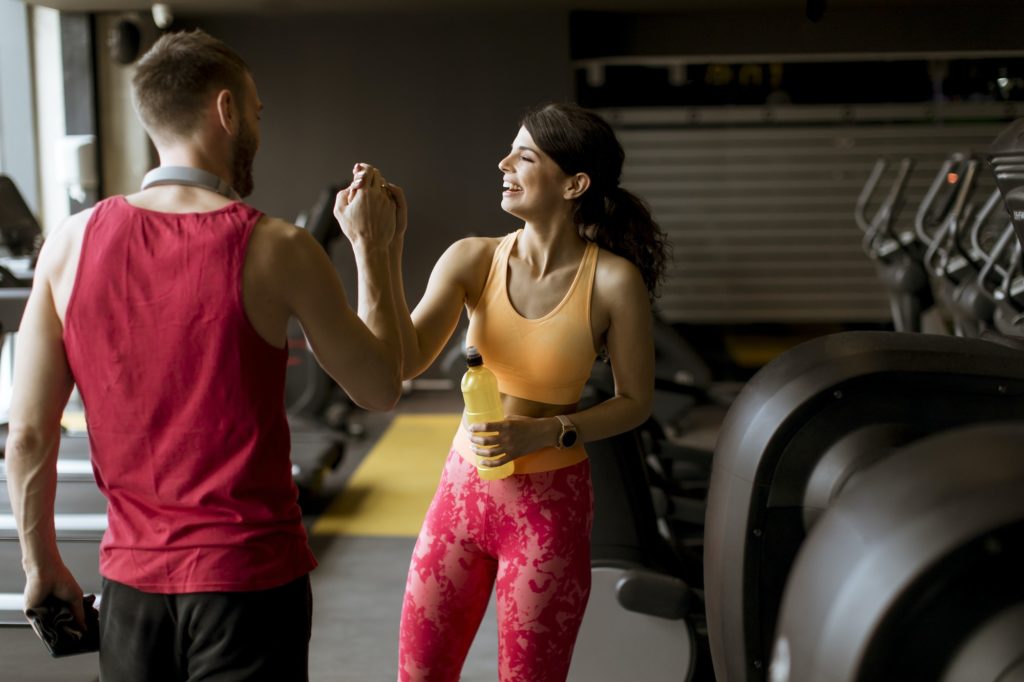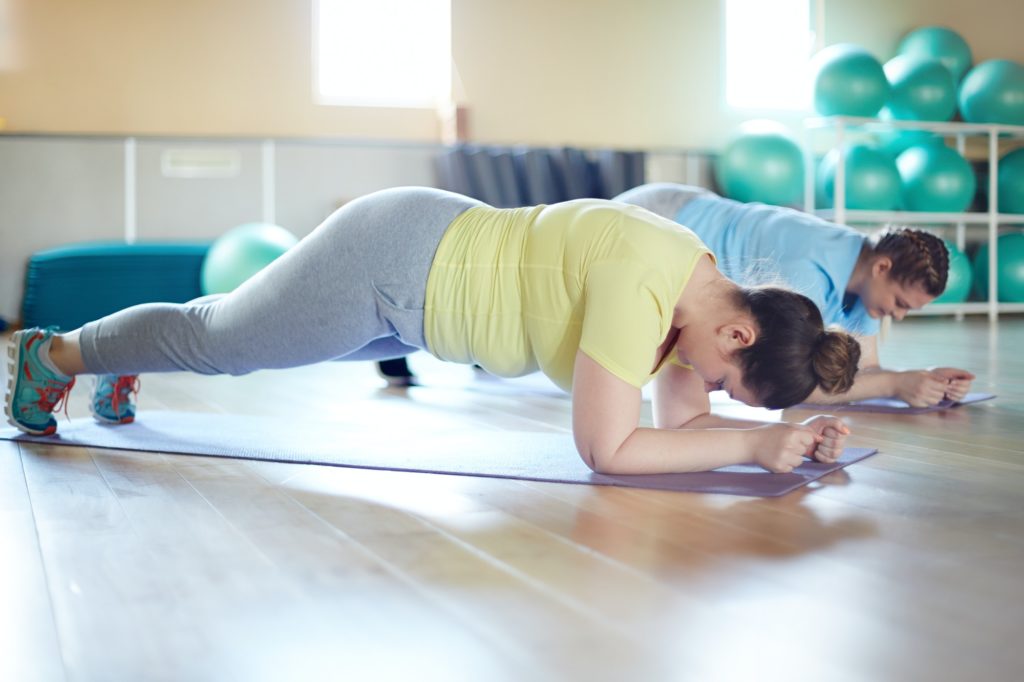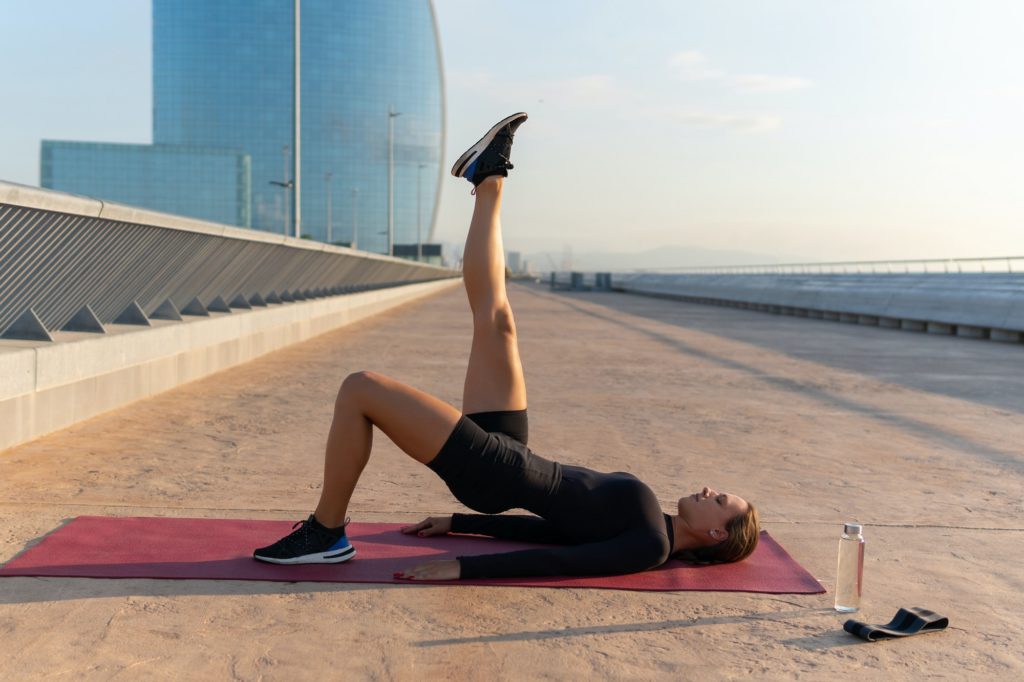I am currently galavanting around in my favorite place in the world…
…London.
I spent the weekend with my good friend Luke Worthington putting on our Strategic Strength Workshop and now I am in Day one of a three day introvert extravaganza. My plan is to do nothing but walk around the city, talk to as little people as possible, and eat carrot cake.
I am hoping to get a little writing in while here, but until inspiration strikes I have a lovely post today from another colleague of mine, Ottawa based personal trainer, Elsbeth Vaino.
Enjoy!

The Importance of Feedback
“That was awesome!”
“Good job!”
“You are on fire today!”
Everyone likes to hear they’re doing well, and the feedback you give clients can take their workout up a level or two. If their form isn’t the best, feedback can help them get the more out of that exercise. But that’s actually not the kind of feedback I want to talk about.
I want to talk about the feedback you ask for from your clients.
No, not about how well you’re doing, although it is nice to hear clients tell you how much of an impact you are having on their life.
The best feedback is the stuff your clients tell you about the exercises they’re doing. I’ll be honest that I only clued into this gem a few years ago, which means I spent way too long training clients without all the facts. I don’t even remember why I started asking “where do you feel that?” and “how does that exercise feel?”, but I do remember how high my eyebrows shot up at some of the answers.
Me: “How’s that plank treating you?”
Client: “I love it. It’s a great back exercise!”
Me:
Me: “Where do you feel that most?” (asking about a glute bridge)
Client: “Here.” (pointing to her quads)
Client: “Here.” (pointing to the low back on his up-leg side)
Client: “Here.” (pointing to his hamstrings)
Me:
Me: “How easy or hard is that?” (asking before their second set of split squats)
Client: “It’s really hard on the left leg and pretty easy on the right.”
Me: “Where do you feel that most?”
Client: points to the left quad. (while doing the exercise with the right foot forward)
Client: points to the left quad. (while doing the exercise with the left foot forward)
Me:
I’m going to go out on a limb and suggest I’m not the only trainer whose clients feel some exercises in unexpected ways. I’m not saying there’s anything inherently wrong with the responses above, but I am saying that if you put a glute bridge in someone’s program, you’re probably doing it with the goal of strengthening their glutes, not their quads or hip flexors.
Sometimes form issues in an exercise are easy to spot, with obvious ones being round-back deadlifts, or deadlifts where the person clearly pulls up from their back vs drives from their legs and hips. But the truth is, sometimes an exercise looks good, but still isn’t accomplishing what we think it is.
In addition to clients telling me they feel muscles in a way I don’t expect, sometimes they also give visual clues. If you or your client is stretching or rubbing the low back right after an exercise, ask why. The answer is almost always one of two things:
- It’s just a habit
- The back feels tight.
If the back feels tight after doing an exercise that isn’t intended to work the low back, something unexpected is probably going on.
If you’re on board with the concept that maybe you (or your clients) aren’t getting what is expected out of some exercises, the next question should probably be: “what can you do about it?” Thankfully it’s not super hard.
Here are the steps I suggest:
Step 1: Make Sure You Understand What the Exercises You’re Doing Are Supposed to Be Working
Some are simple: glute bridges should primarily work the glutes, side planks work the sides (aka obliques), planks work the abs, split squats and lunges work the legs, primarily the front of the front one. Most rows work primarily the upper back, while bench press is primarily about the chest.
No idea what this works
Some are less simple as they work more muscles. Deadlifts work basically everything, but really, the low back is just stabilizing while the legs and upper back do the heavy lifting. Given that, if you ask your client how they feel after deadlifts and they mention their back is sore or tight, odds are something is off. Similarly, squats work almost everything but it’s mostly a lower body exercise.
If you’re not sure, find out, because this is important. How? If you have a trainer, ask them. If not, check in with a book or articles from one of the trainers on the internet whose stuff you think is good.
Step 2: Find Out What’s Actually Happening By Watching and Asking
“Where do you feel that most?” “How does that feel?” Ask yourself/your client upon arrival “how are you?” or “how did you feel after the last workout?”
Does the answer match the goal? If yes, great! Carry on. If not, now what?
Step 3: Coach, Adapt, or Replace
Pretty much every exercise issue can be solved by one of these three things, and in my opinion, they should be tried in that order.
Try to re-coach it first (or review the form if you’re doing your own thing). As trainers, we can be quick to assume that if an exercise isn’t performed properly, we need to bring in approaches to correct it but maybe the person just didn’t fully understand the movement. Before assuming you need to adapt the movement, coach it again – with different words if you need to.

If that doesn’t get the desired result, then try to adapt. There are lots of options:
- Add a riser to limit the range of motion (maybe temporarily)
- Add a band to help the person feel the intent of the exercise (e.g. band around the knees in a squat)
- Move the arms from the floor to a bench for the plank or side plank (if you or your clients have ever felt planks or side planks in your back more than abs or obliques, or in your shoulder and neck this is a game-changer)
Did that work?
If so, great! If not, try another adaptation if you know one.
If that still doesn’t work, replace it with something else.
Contrary to what the internet wants you to believe, there is no exercise that you have to do. (ducks to avoid the lightning). And most of the time there are other exercises that will actually achieve the desired outcome for you or your client.
Here is how I have addressed a few of the examples noted above:
The plank that works the low back:

Coach it: “Think about shortening the distance between the bottom of your ribs and the top of your pelvis, and I want you to stop if you start to feel it in your back.” In this case, if they make it to twenty seconds before it goes into the back, we keep the plank as is, with the goal of twenty becoming twenty-five and then thirty… If after a few workouts, it’s still at twenty, we move to adapt it.
Adapt it: “I want you to do the same thing, but this time with your forearms on a bench.” I’m not sure who decided that planks from the floor is where everyone should start, but in my experience, there are a lot of people who should be starting with an incline plank. This adaptation is often a game-changer. Once the person can get to a minute at an incline, we try moving to the floor, while coaching them to stop if they start to feel it more in the back than the abs.
Replace it: In this case, we rarely have to replace it, but if need be, dead bugs can be a good option, although they might need coaching to ensure the back doesn’t arch.
Single-leg glute bridges felt mostly in the hamstrings:

Coach it: ”Push your hips up as you press your foot into the ground and also think about pressing your toes through the front of your shoes”.
Adapt it: Provide some extra support by switching to a 1.5 leg glute bridge where you have both feet on the floor, but only put as much pressure on the second foot as you need to feel the glute working.
Replace it: Try a cable hip extension or two leg hip thrust.
Split squat for the side where it is felt more in the back leg:
Coach it: “Lean forward at the hip and when you get to the bottom, really drive the front foot into the floor to push yourself up.”
Adapt it: Put a band around the front knee and pull it forward as they do the movement.
Replace it: Switch to a lateral stepup (or a reverse lunge.
About the Author
 Elsbeth Vaino is a personal trainer and gym owner at Custom Strength in Ottawa, Canada, where she and her team primarily train regular people who don’t love the gym but do like what going to the gym allows them to do. Before becoming a trainer, she worked as an electronic warfare engineer (you know, same old story). Check her out on Instagram (HERE) for exercise videos or head to her blog (HERE) for those who prefer words.
Elsbeth Vaino is a personal trainer and gym owner at Custom Strength in Ottawa, Canada, where she and her team primarily train regular people who don’t love the gym but do like what going to the gym allows them to do. Before becoming a trainer, she worked as an electronic warfare engineer (you know, same old story). Check her out on Instagram (HERE) for exercise videos or head to her blog (HERE) for those who prefer words.



